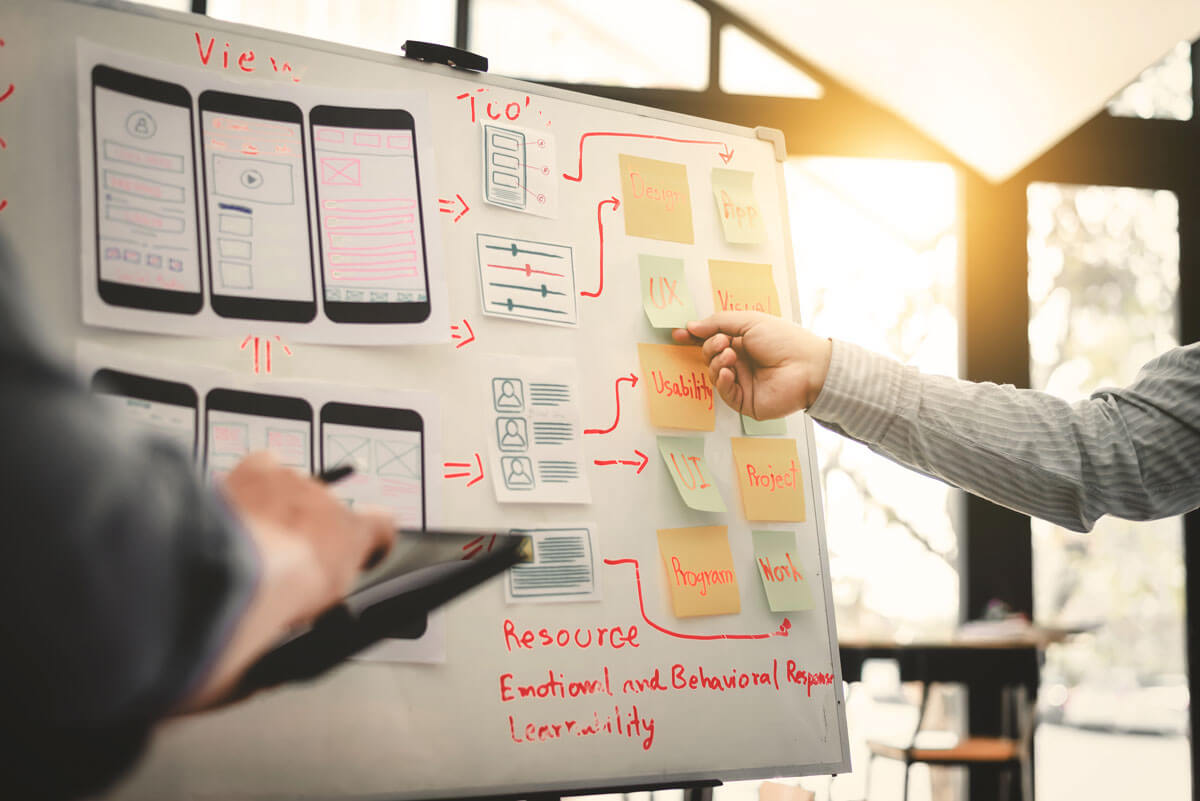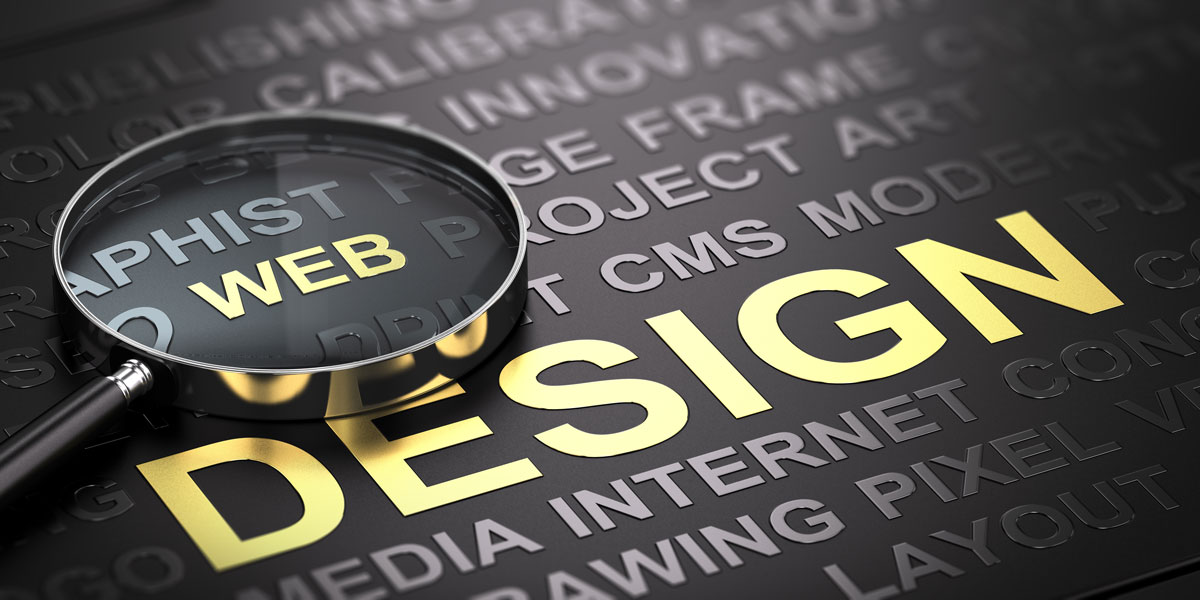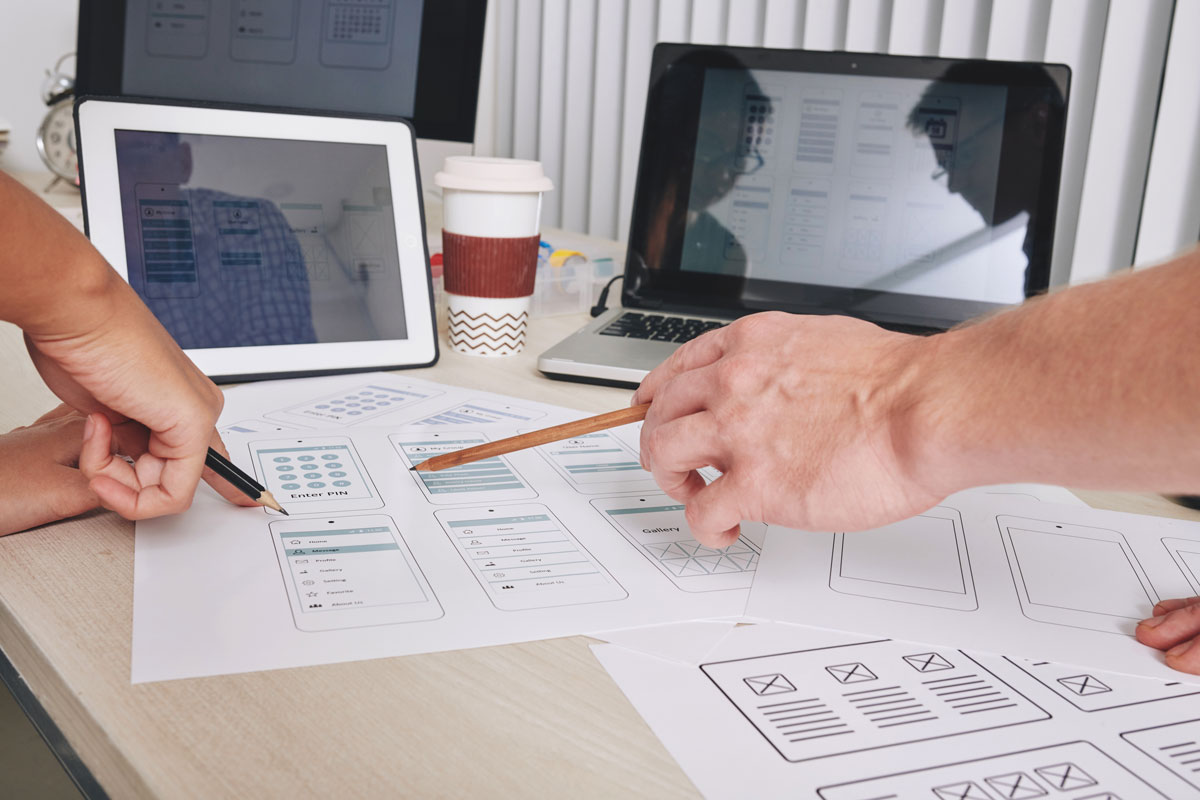In today's digital world, where user-centricity drives success, UX design is pivotal in creating delightful and meaningful user experiences. We cannot underestimate the importance of UX design in websites, mobile apps, products, and services. This article explores the significance of UX design, its impact on user satisfaction, and how it contributes to overall business success.
1. What is UX Design?
Let's kick things off by answering a fundamental question that some of you might be wondering about: what is UX design? UX design makes a product or service easier and more fun. This boosts the happiness of the user. It involves understanding the needs and expectations of users and crafting designs that cater to those needs seamlessly. UX designers focus on creating intuitive and engaging interactions that leave a positive and lasting impression on users.
Image by Freepik
2. The Key Elements of UX Design
2.1 UX Research
Before they start designing, UX designers do a lot of research. They want to understand how users behave, what issues they face, and what they like. By understanding the target audience, UX designers can effectively create solutions that address specific user needs.
2.2 Information Architecture
Information architecture is about arranging and shaping a product's features and data. We design it so users can explore and find what they want easily. A well-designed information architecture ensures that users can access information quickly and effortlessly.
2.3 Interaction Design
The emphasis of interaction design is on shaping the way users engage with a product or service. It involves designing intuitive user interfaces and determining how users navigate different elements and complete tasks seamlessly.
2.4 Visual Design
The aesthetics of a product or service concern visual design. It includes selecting color schemes, typography, and imagery that align with the brand's identity and create a visually appealing user experience.
2.5 User Flow
User flow refers to a user's path while navigating through a product or service. A good layout for user navigation guarantees that users can reach their objectives smoothly, without hitting unwanted obstacles or misunderstandings.
Image by Freepik
3. The Impact of User Experience UX Design on User Satisfaction
3.1 Improved Usability
A good UX design makes a product easier to use. This means users can finish their tasks quickly and with less effort. Intuitive navigation, clear calls-to-action, and straightforward workflows provide a seamless user experience that satisfies users.
3.2 Enhanced Accessibility
An inclusive UX design considers the diverse needs of all users, including those with disabilities. UX designers make sure everyone can use the product easily. They do this by adding features like screen readers and keyboard navigation.
3.3 Reduced Friction and Frustration
A good user experience design makes things easy and enjoyable. This helps prevent people from giving up on a product or service due to annoyance. By addressing pain points, such as slow load times or confusing layouts, UX designers foster a positive experience.
3.4 Increased Engagement and Loyalty
A delightful user experience encourages users to spend more time interacting with a product, leading to increased engagement. Moreover, satisfied users are more likely to become loyal customers and brand advocates, driving long-term business success.
4. The Business Impact of UX Design
The impact of UX design extends far beyond creating a pleasant interface for users. It directly influences a business's success and can significantly determine its growth and profitability. Let's explore in greater detail how UX design impacts businesses in various aspects:
4.1 Customer-Centric Approach
Adopting a customer-centric approach is essential for any business to thrive. UX design is essential because it puts users first. It shows a real effort to understand and meet what customers truly need. It involves empathizing with users, listening to their feedback, and continuously improving the product based on their preferences and pain points.
A customer-centric approach fosters trust and loyalty among users. When customers think a product is made just for them, they will likely stick with the brand and buy more. In simpler terms, when customers are happy with a product, they often tell others about it. This helps the product to grow and reach more people through positive chatter naturally.
4.2 Competitive Advantage
In a fiercely competitive marketplace, providing an exceptional user experience can set a business apart from its rivals. Customers are increasingly discerning and selective, gravitating towards products that offer the best experience. So, putting money into UX design and giving users a great experience can help businesses stand out from the competition.
When people enjoy using a product, they often pick it over others. This is true even if the other options have the same features or cost. Companies can enhance their reputation and outperform rivals by continuously improving user experience with their products. They can do this based on what the users are saying about their products.
4.3 Positive Brand Perception
UX design significantly influences how users perceive a brand. A product that is easy to use, aesthetically pleasing, and enjoyable to interact with creates a positive and lasting impression. Otherwise, a product that's hard to use can make people feel bad about the brand.
A well-designed user experience aligns with a brand's identity and values, reinforcing its image and reputation. When people enjoy using a brand, they begin to trust it more. They see the brand as dependable and caring about its customers.
4.4 Higher Conversion Rates
A great user experience can help businesses meet their goals. These goals may include getting more leads, boosting sales, or having more user interaction. A good user experience also helps turn more visitors into customers. When the website is easy to use, people are more likely to buy something or sign up for a service.
By streamlining the conversion process and removing barriers to entry, UX design empowers users to take action more confidently and effortlessly. This, in turn, results in higher conversion rates and a positive impact on the business's bottom line.
4.5 Return on Investment (ROI)
Investing in UX design can yield substantial returns for businesses. While the initial cost of UX research, design, and implementation may seem significant, the long-term benefits far outweigh these expenses. The positive impact on user satisfaction, customer retention, and conversion rates directly contribute to increased revenue and profitability.
Furthermore, focusing on UX design helps reduce the cost of customer support and maintenance. A good design makes a product easy to use, so users won't get frustrated. This also means you'll spend less on support and save money in the long run.
Image by Freepik
5. Common Challenges in UX Design
Creating an exceptional user experience is not without its challenges. UX designers face several hurdles during the design process that require careful consideration and problem-solving. Let's delve deeper into some of the common challenges faced in UX design:
5.1 Balancing Aesthetics and Functionality
A big hurdle in UX design is striking the perfect equilibrium between looks and usability. Making eye-catching designs is important. But, it's just as key to ensuring your product is easy-to-use and simple to get around. At times, too complicated or showy designs may sidetrack users and obstruct them from successfully finishing tasks.
To overcome this challenge, UX designers must understand that aesthetics should complement functionality, not overshadow it. They should prioritize user-friendly layouts and intuitive interactions while incorporating visually pleasing elements that enhance the overall experience. Regular usability testing and feedback loops can help strike the right balance and refine the design iteratively.
5.2 Designing for Different User Groups
Catering to diverse user groups with varying needs, preferences, and technological abilities can be complex. UX designers need to make sure their designs work for everyone. This includes people who are good with tech and those who may not use digital devices too often or have disabilities.
Solving this problem involves studying our users carefully and creating profiles. These profiles include different types of people in our target audience. These personas help designers empathize with users and understand their unique perspectives. Additionally, an inclusive design approach ensures the product is accessible to all users, regardless of their abilities.
5.3 Adapting to New Technologies
Tech is changing fast. So, it's challenging for UX designers to keep up and use these new technologies. New tech stuff like VR (virtual reality), AR (augmented reality), voice chats, and wearable gadgets offer thrilling possibilities to improve how users feel and interact. However, integrating these technologies seamlessly can be both thrilling and daunting.
To overcome this obstacle, UX designers must keep up-to-date with the newest trends and tech developments. Participating in events like industry gatherings, workshops, and networking sessions can give them an edge. In other words, doing practical tests and getting user comments on new features can help designers. They can use this to fine-tune their designs to be as user-friendly as possible.
5.4 Balancing Stakeholder Demands
In many design projects, UX designers must navigate between multiple stakeholders, each with their preferences and priorities. Balancing these different perspectives while maintaining a user-centered approach can be challenging.
To manage this challenge, UX designers should foster effective communication and collaboration with stakeholders throughout the design process. Encouraging open dialogue and conducting stakeholder workshops or meetings can help align everyone's expectations and arrive at mutually agreeable solutions. Furthermore, data-driven insights from user research can provide a strong rationale for design decisions, providing objective evidence to support design choices.
5.5 Time and Resource Constraints
In quick-moving businesses, UX designers often have little time and fewer resources. This can affect how deep they go and the quality of their work. Rushing through the design process may result in suboptimal user experiences, ultimately affecting user satisfaction and business success.
To tackle this challenge, UX designers should prioritize tasks based on their impact on user experience and business goals. Agile methodologies, such as iterative design and rapid prototyping, can help maximize productivity and efficiency while maintaining focus on user needs. Working with different teams and including important people from the start can make decisions easier and improve the design process.
Conclusion
In conclusion, UX design is not just a buzzword; it is a fundamental aspect of modern business success. If businesses make their customers the main focus when designing, they can create great experiences. This can make customers happy, keep them coming back, and give the business a real edge over competition. Investing in UX design is investing in the future of a business, fostering growth and prosperity in today's digital landscape.
FAQs
1. What is the role of graphic design in UX design?
Graphic design plays a big role in UX design. It's about making things look good to improve the user's overall experience. Graphics, such as icons, illustrations, and images, help communicate information effectively and contribute to the product's aesthetics.
2. How does interaction design influence user engagement?
Interaction design determines how users interact with a product, shaping their overall experience. Easy-to-use actions and smooth steps help users enjoy the product more. This boosts user happiness and keeps them engaged longer.
3. Can UX design benefit e-commerce businesses?
Absolutely! In the e-commerce industry, user experience plays a vital role in driving conversions. A well-designed and user-friendly e-commerce website leads to higher customer retention, increased sales, and improved brand loyalty.
4. What are the key factors to consider in user research?
User research should focus on understanding user needs, pain points, motivations, and behavior. Factors like demographics, user preferences, and goals help UX designers create designs tailored to the target audience.
5. How does UX design differ from UI design?
UX design actively focuses on the overall user experience, which includes doing research, improving usability and understanding user flow. In comparison, User Interface (UI) design is about the look and feel of a product. It focuses on things like buttons, menus, and layouts. Both are crucial aspects of creating a successful digital product.




